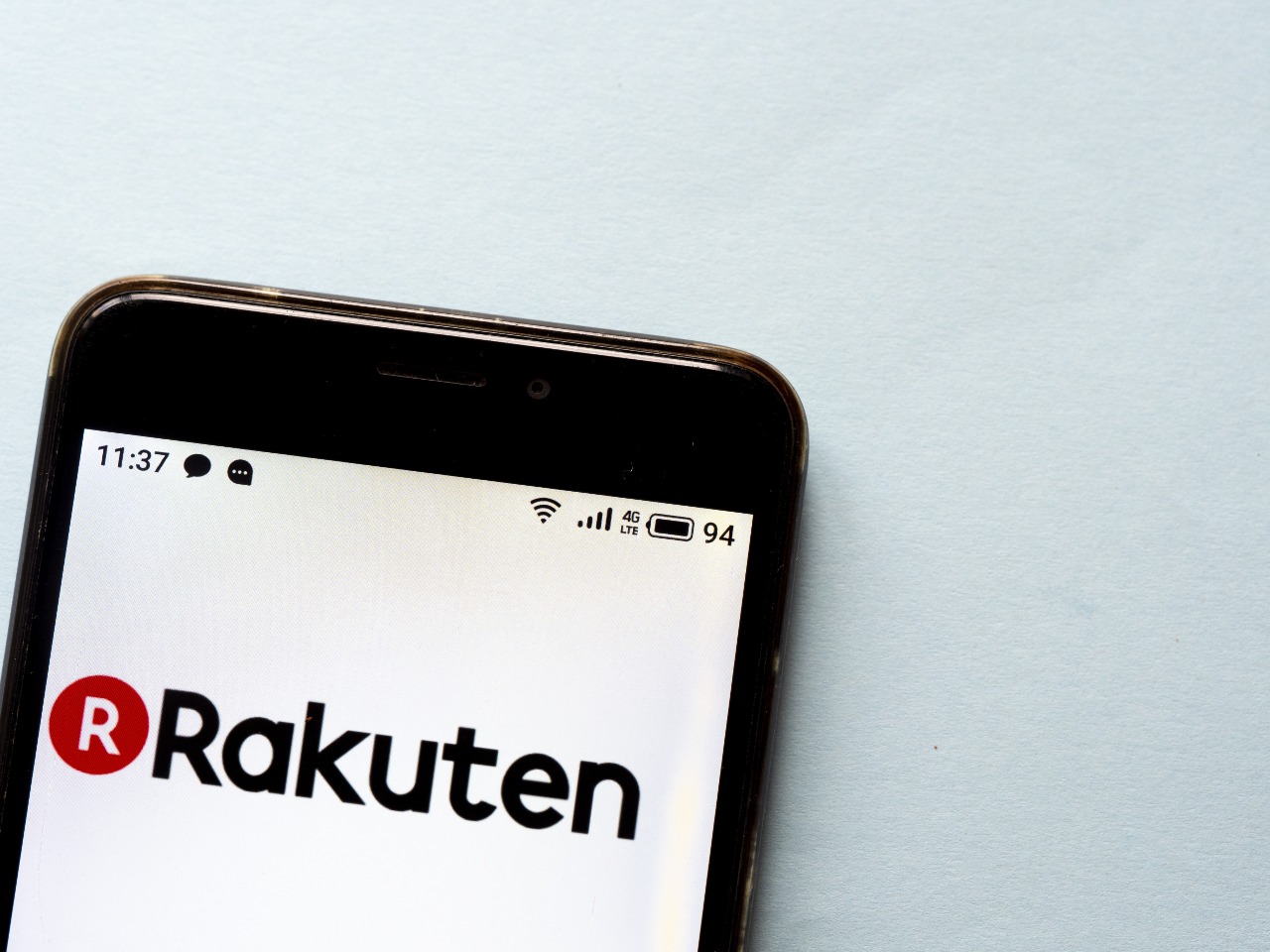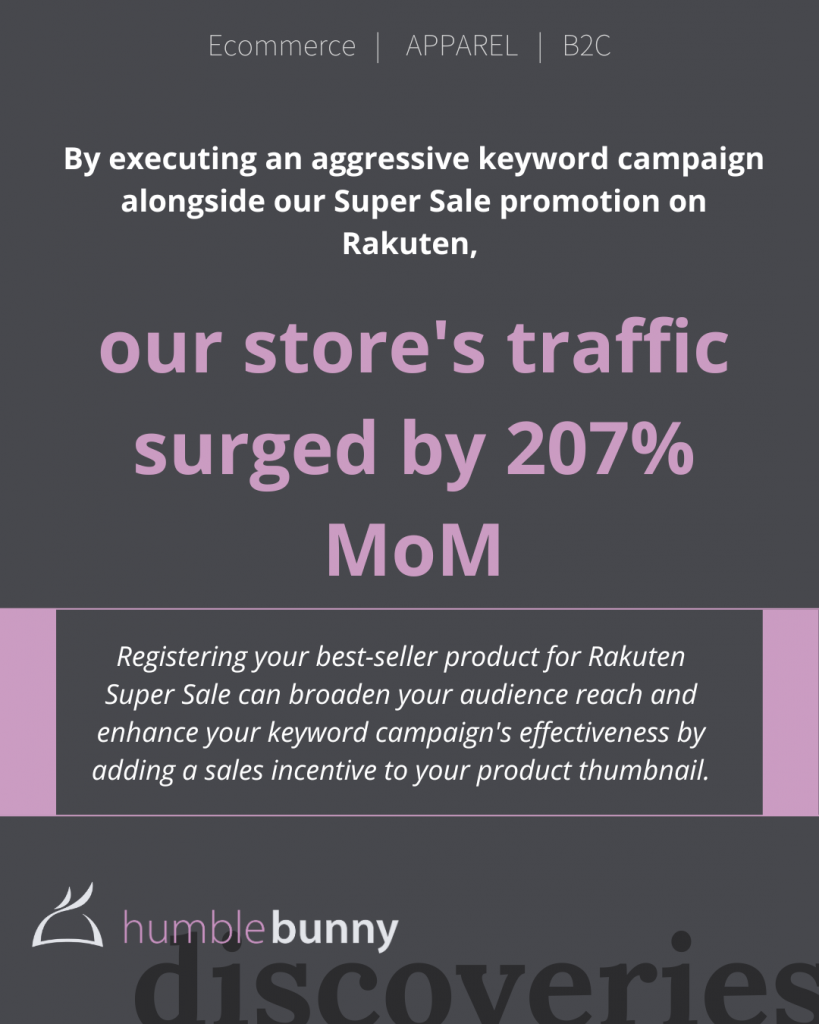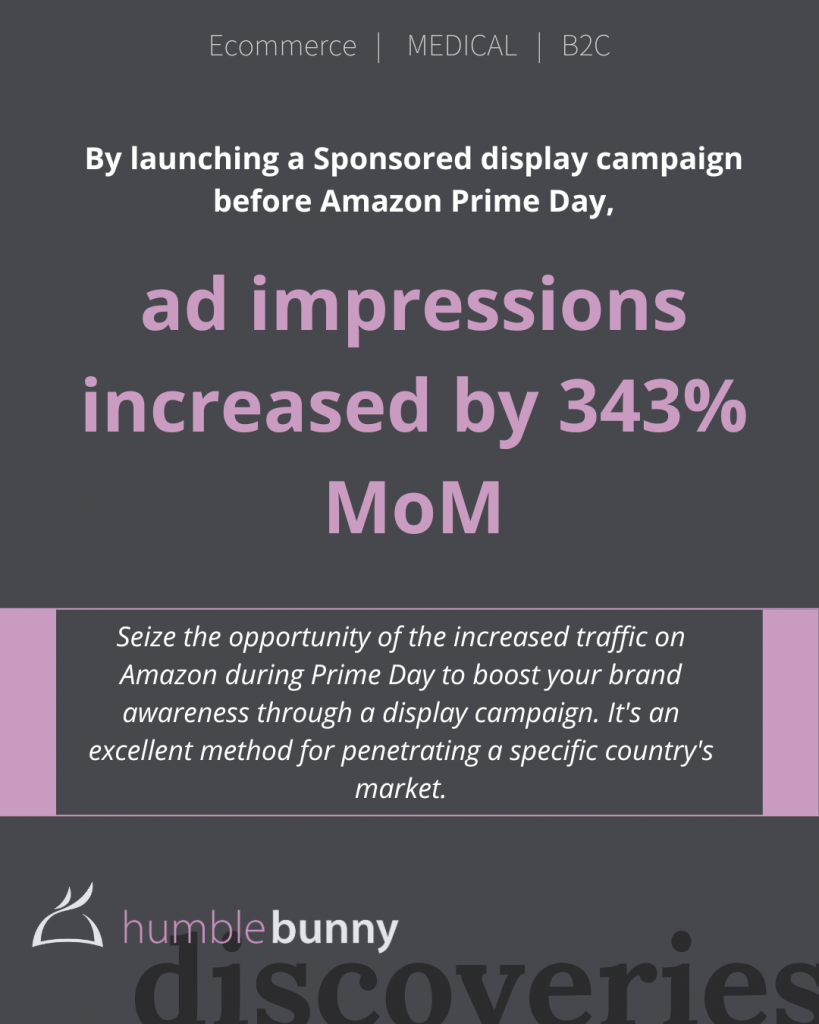The sharp rise in online global competition over the last two decades has prompted many ecommerce companies to reconsider their business and marketing strategies at an international scale. But where is the best place to start expanding your best ecommerce presence?
With the third largest ecommerce market worldwide, Japan is an enticing opportunity for many brands looking to break into a new market, but it doesn’t come without challenges. With this ecommerce in Japan overview, you’ll be prepared to take the first steps in expanding your ecommerce presence to Japan.
Table of Contents
- An introduction to ecommerce in Japan
- Unique market factors
- Top Japanese ecommerce platforms
- What are people buying online in Japan?
- How does ecommerce shopping work in Japan?
- Adapting to the Japanese consumer mindset
- Japanese ecommerce trends
- Building a localized ecommerce marketing strategy
- Final thoughts on ecommerce in Japan
- Steal our best ideas!
An Introduction to Ecommerce in Japan
With the third largest ecommerce market worldwide, excellent logistics infrastructure, and a domestic population with significant purchasing power, Japan presents itself as an ideal destination for many international brands looking to expand their horizons.
Consumer electronics, fashion, and travel-related products drive a large proportion of sales here, but the Japanese consumer has shown a significant appetite for all types of goods and online services, from food and personal care to general household goods.
However, those with hopes of entering Japan’s ecommerce market, famed for its preference of Japanese-made products, high expectations for quality, and complex regulations, must first overcome the many challenges faced by this single-language culture.
We explore what these challenges are and everything we think you need to know when taking on Japan’s incredibly exciting ecommerce market.
Unique Market Factors

Shopping online in Japan is incredibly convenient and the diverse range of available products and services is formidable. Primary drivers behind the growth of the nation’s ecommerce market are its strong infrastructure networks, widespread internet penetration, and highly dense populations of urban consumers with an appetite for new trends.
The nation’s ageing population has been identified as a potential barrier to ecommerce growth in recent years, but this is somewhat counterbalanced by the high personal wealth among this segment of society. As well as driving demand for certain products and services related to healthcare, medical equipment, pharmaceutical products, biotechnology, and safety equipment, the need for convenient and reliable home delivery services is also growing.
There is a lingering love for traditional cash payments and purchasing goods locally from brick-and-mortar stores, but we’ve seen Japan catch up rapidly with the rest of the world in this regard, with many businesses moving online and card payment becoming widespread among a largely tech-savvy consumer population. It’s also true that these two things aren’t mutually exclusive and many businesses thrive using multi-channels strategies that make sales both online and off.
Other important factors include the country’s highly developed distribution networks and logistics systems; the fact that much of the population is centralised in dense urban areas; and the fact that Japan is also among the richest countries in the world.
Do Japanese Shoppers Buy Foreign Products?
Japanese people buy all kinds of products, from everywhere, but they especially enjoy ones made in their home country. This is arguably due to the greater sense of reliability and reputation that domestic brands offer. Outsiders, therefore, are at a natural disadvantage here.
This isn’t to say that you can’t thrive here if you have a great product and your brand and marketing is adapted to the Japanese consumer. Primary reasons for buying from non-Japanese companies include availability, prestige, quality, and price.
HB Pro Tip: While the popularity of foreign retailers is growing, Japanese shoppers still prefer to buy locally. Some tools at your disposal when winning over Japanese shoppers include: flawless online customer experiences, faultless product quality, a unique appeal, and loyalty programs.
Forecasted Ecommerce Growth
| Year | Revenue in million US$ |
| 2017 | 72,647 |
| 2018 | 80,729 |
| 2019 | 88,110 |
| 2020 | 104,639 |
| 2021 | 112,465 |
| 2022 | 120,292 |
| 2023 | 128,054 |
| 2024 | 135,666 |
| 2025 | 143,279 |
Source: Statista
Top Japanese Ecommerce Platforms

Amazon is typically where most international sellers begin their journey into Japan. With a familiar “look and feel” and a somewhat standardised Amazon functionality for sellers across all markets, it’s much easier for foreign retailers to get started here.
Rakuten, Japan’s homegrown ecommerce giant, is the second biggest platform in Japan. With around 49,000 shops and a quarter of Japan’s total ecommerce market share, it’s the next important candidate to consider when trying to reach Japanese consumers.
Finally, Yahoo, despite its diminished global presence, is still thriving in Japan, with its online shopping division, Yahoo! Shopping and Yahoo! Auction catering to millions of shoppers each month.
Japan’s Challenger Platforms
Domestic ecommerce platforms offer increasing opportunities to reach a wide section of Japan’s population, potentially providing more scope to target niche groups. With new, sophisticated platform offerings like loyalty schemes and community engagement, they are making amicable attempts to unseat Amazon and Rakuten’s dominance in Japan.
However, these platforms are relatively harder to enter for foreign businesses without extensive Japanese language support, due to their more demanding registration, language, and localization requirements; and extensive on-boarding processes, which can make the process more elaborate for new merchants, particularly foreign retailers.
Success on these platforms can often rely on finding local partners or vendors who are already authorized to sell on one of these platforms, and who can assist you in your ecommerce activities. They might also be able to help you handle Japan’s stringent need for high quality consumer support for your Japanese customers.
Amazon vs Rakuten vs Yahoo! Who’s Better?
Top Ecommerce Platforms in Japan
| Platform | Traffic Volume (October 2020) | Description |
| Amazon Japan | 605.48M | Amazon is an uncontested global leader of ecommerce which thanks to its substantial investments in Japan, now outpaces Rakuten. |
| Rakuten | 562.81M | Rakuten is a Japanese ecommerce and online retailing company offering a digital marketplace platform where brands can sell their products directly in a wide range of categories through their own virtual storefronts. |
| Yahoo! Shopping | 118.30M | Yahoo! Japan Shopping provides a wide range of products including, cosmetics, electronics, clothing and footwear, home equipment. The search engine receives a huge amount of traffic and remains a major player in the Japanese market. |
| PayPay Mall | 35.88M | Owned by Yahoo Japan, PayPay Mall allows users to collect points using PayPay for their purchases, as well as additional points if they are Yahoo Premium Account holders |
| Au Pay Mall (Wowma) | 28.99M | Wowma provides a wide choice of products to its many online shoppers, ranging from cosmetics and home equipment to household goods and appliances. |
| Mercari | 102.54M | Mercari is an incredibly popular marketplace app launched in 2013 which allows people to buy and sell their own products, as well as access products from famous brands. The app also features a live streaming ecommerce channel. |
| Zozo Town | 47.28M | One of the largest specialized fashion e-commerce retailers in Japan, providing products from a wide range of local and international brands. |
| Qoo10 Japan | 16.66M | Qoo10 is an online marketplace with a large portfolio of products. It has a strong presence in many Asian countries, such as Korea and Singapore. |
| Lohaco | 8.28M | An internet retail portal that is relatively new to the scene, but enjoys significant traffic from women in their 20-40s. |
Sourced: SimilarWeb’s October 2020 domain overview
HB Pro Tip:Consumer trends in the C2C market and platforms like Mercari — now one of the best ecommerce platforms in Japan — are now giving people a new way to shop. Engaging user interfaces on smartphone applications and the ability to get almost-new products for a fraction of the price is enticing many shoppers away from traditional B2C online marketplaces. This makes it even more imperative for you to offer good value for money and a satisfying customer journey when selling online.
What Are People Buying Online In Japan?

| Segment | Percentage of Total Ecommerce Value in Japan |
| Travel | 37% |
| Consumer electronics | 20.7% |
| Furniture and household goods | 14.9% |
| Clothes and apparel | 12.8% |
| Clothes and apparel | 12.8% |
| Food, health and beauty | 10.3% |
| Other | 4.4% |
Source: J.P. Morgan
According to J.P. Morgan’s 2019 Payment Trends – Global Insights Report, the most popular retail segments online are travel, consumer electronics, and furniture and household goods. Unsurprisingly, fashion is also one of the top merchandise categories, as well as products related to food, health, and beauty.
The toys, hobbies and DIY retail segment is also one of the key drivers of the Japanese ecommerce market, according to Statista. And it’s likely that the country’s ageing population will also heavily influence popular purchases over the coming years, with many products and services being aimed at catering to the needs and preferences of one of the oldest populations in the world.
How Does Ecommerce Shopping Work in Japan?
The act of shopping online might seem relatively universal, with motivations and processes in most developed countries remaining similar. However, as it’s Japan, it’s always important to make sure to take note of any unique variations.
1. Product Research
The majority of Japanese consumers will spend a substantial amount of time deliberating their purchase before they commit. There is perhaps no culture like it that is so in tune with peer reviews, comparison sites like the popular Kakaku, and personal recommendations from family and friends.
Therefore, the first step in many people’s journeys is to avidly research their potential purchases, including user reviews and anything that gives them a sense of a brand’s reputation. Success here can of course be aided by effective brand advertising and marketing campaigns that encourage customers to see you as a reliable brand with worthy products.
TV and traditional media channels are crucial to this process, but digital marketing is rapidly becoming one of the most crucial tools for brands hoping to reach new customers. In fact, Japan’s digital marketing spend has finally taken over other forms of market expenditure, like TV and PR. And mobile devices are now the primary driver of traffic to ecommerce websites. with ecommerce mobile apps often commonly used as a medium for virtual window-shopping.
HB Pro Tip: As many Japanese shoppers will scroll through your offerings without the intention of purchasing a specific item immediately, it’s even more important to make sure the whole experience is smooth and enjoyable so that they are encouraged to revisit. This includes accurate product descriptions adapted for Japanese consumers, great visuals, and intelligent web UX.
2. Purchase
Transparency, reliability, and a great user experience are all crucial when it comes to the actual purchasing stage of the online shopping journey. Whether it’s on mobile, tablet or desktop, Japanese shoppers expect a seamless process, where everything from product availability to potential delivery slots are easy to understand and navigate.
Local retailers set the bar high with regards to exceptional customer service. If your site has slow loading times or some of your content is unclear, or even worse, in English, don’t be surprised if traffic drops off before your sales are finalised.
Payment gateways must also be seamless and cater to the various methods Japanese shoppers prefer to use, including card types and local payment schemes. Loyalty programs with points can also be used to enhance the experience further.
3. Logistics

Short delivery times that are executed with precision is one of the true marvels of Japanese ecommerce. As a relatively small country with strong logistics services, customers are used to enjoying fast and reliable deliveries.
Same-day deliveries have moved from being a valuable differentiator to a prerequisite for most platforms, with Amazon and Rakuten able to offer this service to most of Japan’s population through their extensive logistics networks.
For new merchants to Japan who want to arrange fulfilment themselves, there are countless courier services to choose from, including the local postal service Japan Post. When arranging shipping from overseas, online retailers need to set clear expectations regarding delivery times and must inform customers in advance of any delays.
4. Post-purchase
More so than direct customer complaints, the thing you have to be most careful of in Japan is shoppers being dissatisfied with your service and dropping off silently. To make sure you are aware of how your customer’s experience has gone, it’s important to have a robust aftercare and post-purchase strategy to check you’re not letting anyone go away with a bitter taste in their mouth.
In a nation where reputation and satisfied loyal customers are paramount to success for any brand, allowing a negative word to spread about you, whether it’s due to faulty products, inaccurate descriptions, or poor delivery times, can put a serious cap on your potential.
HB Pro Tip: Loyalty programs and promotions are everywhere in Japan. They are seen as one of the best ways to enhance the customer journey and encourage shoppers to come back. Retail contests with prizes, large seasonal discounts, and special promotions are also popular aspects of Japanese ecommerce that can help you keep customers happy and drive more sales.
Adapting to the Japanese Consumer Mindset

Consumer characteristics and preferences influence the ways brands promote themselves in any market. And while globalisation has standardised the approach many international brands take when it comes to marketing in new locations, Japan is somewhere that needs its own approach entirely.
One of the things that set the Japanese consumer mindset apart from neighbours like Korea or China, is its large distrust of organisations. In Edelman’s Trust Barometer, Japan takes third place behind only Russia and the UK in the list of countries who have the most distrust for institutions. What this means is that customers will want to really get to know you first before they become your patrons.
They’ll want to understand how your products are made, the kind of technology or materials you use, the history of your brand, and most importantly, whether you are trustworthy and reliable. Failing with things like customer service or providing accurate product descriptions on your website will undoubtedly put you at a disadvantage.
The Japanese are also incredibly selective about the brands they like and are less likely, on the whole, to buy based on price considerations alone. Much effort is needed for foreign brands to convince people that their products are even better (because equally good is not enough) than products sold by Japanese brands. A few reasons why shoppers might consider opting for a foreign brand are:
- Items are not available from domestic brands
- Products are imported from a country famous for it (French wine, German cars etc.)
- Items are less expensive from foreign manufacturers (made in China)
- To enjoy the ‘exotic’ factor and appreciate the lifestyle aspect of international brands and products
- To show social status and class with items and brands that are fashionable in other countries
- Unless you find a way to present yourself in the right way, you’ll easily be overlooked by many shoppers who will choose to shop from familiar domestic brands they already trust
HB Pro Tip: In Japan’s ageing population, it’s important to remember that older consumers have the greatest purchasing power, with millennials characterised as less materialistic and less affluent than their older generations. Keeping this in mind when building your customer profiles and creating your brand communication is wise.
Need More Insights About Japanese Shoppers? We’ve Got 10 You Really Need to Know!
Japanese Holiday and Shopping Events

Japan is home to a number of online shopping events that are unique to the country. Understanding what these are and building ecommerce marketing campaigns around them is a great way to drive sales during certain times of the year.
| Christmas and Oseibo | Somewhat overlapping each other during winter, the Western tradition of giving gifts to loved ones at ‘Christmas’, and the ‘Oseibo’, a Japanese custom of giving gifts to people who have shown you kindness, are both popular times for shopping. |
| Ochuugen | A summer gift-giving tradition where people present gifts to their colleagues, bosses, and those close to them such as family and friends. Also, summer is a good time for sales campaigns as employers typically provide employees with their annual summer bonuses, which are often spent on luxury goods, leisure, and travel. |
| Hatsu-uri (New Year’s Sale) | The first sale period of the year, Hasu-uri, is a time when many stores release their much anticipated Fukubukuro (also known as happy bags or lucky bags) which are filled with a range of heavily discounted products from a particular store. |
| Shichi-Go-San (7-5-3) | This is a Japanese festival that takes place on November 15 and celebrates the well-being of boys who are three and five years old, and girls who are three and seven years old. It marks an important milestone for children in Japanese culture. |
| Golden Week and Children’s Day | Golden Week, a popular vacation week for locals, contains several individual holiday events. It is a time when Japanese people like to shop and sometimes offer gifts to their loved ones. |
| Valentines Day and White Day | Taking place on March 14, this is a holiday where men often give presents to their female partners, much like Valentines Day, which takes place a month earlier and in Japan involves mostly women giving gifts to their male partners. |
Users by Age in Japanese Ecommerce
In Japan, workplace seniority and promotions generally follow age, meaning older Japanese people naturally have more disposable income. In the year 2020, over 40% of Japanese online shoppers are over 45 years old. This makes catering to older segments with significantly more purchasing power than younger segments, a safer bet when deciding on your customer target personas.
| Age | Market Share |
| 18-24 | 11.4% |
| 25-34 | 18.9% |
| 35-44 | 23.6% |
| 45-54 | 25.6% |
| 55-64 | 20.5% |
Source: Statista
Creating Japanese Websites and Ecommerce Platforms
International merchants should be aware that ecommerce web page layout and design for Japanese sites can look different to ecommerce site designs preferred in the U.S. and Europe. A few standout characteristics of Japanese websites include:
- Greater amounts of text and detailed information upfront
- Less white space on page
- Content aims to inform the purchasing decision rather than create an emotional connection
- Multiple scripts are used as well, as both vertical and horizontal text lines
- Smaller and more frequent graphics are used rather than larger high-resolution images
- Data, testimonials, and statistics are given more priority on landing pages to build trust with the user
- Several contrasting colors and design elements are often used within small spaces
HB Pro Tip: While younger users are more open to Western design trends, the fact that many businesses actively cater their online content to older consumers means that the adoption of styles and trends that are more common in the US or Europe is somewhat unpredictable. It’s much better to learn the “norm” and adapt your brand to match your users.
Learn More About Japanese Web Design Trends
Japanese Ecommerce Trends

Innovation in Japan is somewhat constant. Developments in the world of technology continue to shape the way people shop today, while changing expectations and preferences of customers directly impact the kind of offerings brands bring to the table through their online stores and ecommerce campaigns.
1. The Growth of Mobile Shopping
| Mobile Payment Method | Market Total ($US) |
| Ecommerce completed on a mobile device | 36.6 billion |
| Mobile ecommerce completed in-app | 16.5 billion |
| Mobile ecommerce completed on a browser | 20.1 billion |
Source: J.P. Morgan 2019 Payments Trends: Japan
Mobile is the most preferred platform for online shopping today in Japan. Most large retailers, such as Amazon and Rakuten, have developed applications to facilitate mobile ecommerce. This is supported by almost universal adoption of smartphones, with a number of Japanese shoppers even owning two phones. Naturally, brands will need to focus heavily on building great UX experiences on mobile, as well as desktop and tablet.
2. More Sales Driven By Social Media
The number of social media users in Japan amounted to approximately 82.6 million in 2019. This figure was projected to increase to about 89 million users by 2025, despite an expected decrease of the total population of Japan.
Both advertising on, and selling directly through, social media plays a significant part in the success of brands. Facebook is an increasingly popular PPC for those trying to drive greater traffic to their ecommerce pages, while Instagram’s integrated ecommerce functionality now allows millions of social media users to shop as they’re browsing.
3. A Diverse Payments Landscape
While cash is still common for in-store payments, cards are the most common payment method for online purchases, making up 65 per cent of market share according to J.P. Morgan.
Further to this, credit cards are more popular than debit, as many standard debit cards from Japanese banks are not compatible with online payments.
There are also a number of new payment options that now exist in Japan, such as cash on delivery and even instalment payments where customers can spread their cost of purchase over several weeks or months. These will largely depend on participating banks and partnerships with ecommerce companies.
A growing collection of card schemes also offer Japanese shoppers many different ways to pay, such as Pay Easy, Konbini, LINE Pay, and PayPay. Altogether, there are many ways to pay in Japan, but foreign brands getting to know the landscape still can cater to the majority of shoppers by offering credit card payments online.
Popular Payment Methods
- PayPay
- LINE Pay
- Rakuten Pay
- Origami Pay
- D-barai
- merPay
- Pixiv PAY
- pring
- Apple Pay
- Google Pay
Building a Localized Ecommerce Marketing Strategy

A localized advertising strategy is crucial to a product’s success in Japan. And one of the first and most challenging obstacles organizations face when expanding into the Japanese market is the language and cultural barrier.
You may have a winning product, but connecting with your new audience will require much more than simply translating your marketing approach from your home market.
Effective Japanese marketing localization requires creativity and careful thought. When done right, it not only gives you a better chance of reaching customers, but it also prevents them from being unhappy and going elsewhere.
Whether it’s your promotional copy or follow up customer service, making sure your content is 100% localized and translated will help you to avoid damage to your brand and reputation.
Embrace Digital Marketing
Digital marketing has probably become the most important channel for foreign retailers hoping to reach Japanese consumers. This is largely to do with the low barrier to entry and that fact that, with a little local language expertise, pretty much any brand can plan and execute a digital PPC campaign to direct traffic to their products.
For those who choose not to leverage an existing online marketplace and want to open up their own ecommerce websites, things like SEO become even more crucial for building up your reputation and making sure people actually land on your pages. A lot also goes into how you showcase your brand and products within each platform.
OPTIMISE Product TITLES AND Descriptions
Japanese individuals are avid information seekers with a strong appetite for technical data. This has contributed to a much greater amount of information showcased on websites and in marketing materials, compared to what is normal in most Western societies.
If your product is technical, advanced, or innovative in any way, make sure you can convey this kind of information accurately, instead of just focusing on the overall benefit it can have on someone’s lifestyle. Japanese shoppers are keen to know how things work, what they’re made from, and how reliable they are before they commit to a purchase.
Adding the right keywords to your ecommerce descriptions and titles is also crucial. We’ve seen from experience with our own clients at Humble Bunny that discovering and adding a single top-ranking intent-based keyword into product titles on Rakuten can lead to an increase of 14.24% sessions, despite a 23.34% decrease in ad spend.
Dangers of Poorly Localized Content
Poor feedback from users who might spread negative messages about your brand and products
Customers requesting refunds because product information is inaccurate
Shoppers perceive you to be too “mysterious” and not as transparent as Japanese brands
You may get fined for inaccurate descriptions when working in sectors like finance or health
The inability to create a strong connection with your new audience
HB Pro Tip: A lack of information, or even worse, false or confusing information about your brand will steer customers away. If they have some unanswered questions about what you offer and how your products work, they’ll probably look elsewhere. Make sure you understand what your audience wants to know and provide it to them with clarity and minimal “fluff”.
Final Thoughts on Ecommerce in Japan

It’s not easy but it’s certainly worth it. Courting your new Japanese audience with considered adaptation of your brand and marketing messages may take some time, but once you’ve established a name for yourself, there’s huge potential to benefit from the third largest ecommerce market in the world. Some final takeaways to keep in mind are:
In Japan, domestic brands have the advantage. International merchants need to consider investing in and offering localized strategies and Japanese language-enabled online shopping platforms.
The most popular ecommerce sites in Japan are Amazon and Rakuten, but this doesn’t mean you can’t build a multi-channel strategy. Just make sure each platform gets enough attention and your content is 100% localized.
International merchants who feel overwhelmed by going it alone can choose to collaborate with local partners to help them sell their products in Japan and handle their branding and marketing activities.
Steal Our Best Ideas
Actionable insights straight from our data
Here are a couple quick discoveries we’ve pulled from the data of our latest projects. Why? To help you make the changes you need to gain traction in the Japanese market! As an agency, we are always digging deeper and searching for those little yet significant tweaks that will push our clients to the next level of success. If you need a partner to help you identify and implement changes like these on a monthly basis, let us know!




Need help expanding your ecommerce business to Japan? Let’s chat on how we can help.